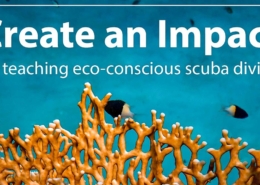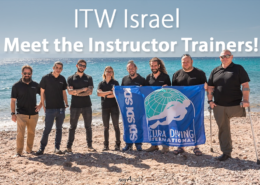The AIDA Model of Marketing
by Mark Powell
You are a fantastic instructor with great diving skills, good with people and can explain diving in an accessible way or you run an amazing dive centre with fantastic facilities, talented and enthusiastic instructors and great diving on your doorstep and yet you are not getting customers signing up for courses or dive trips. Why is that? One possible reason is that you do not understand the process that customers go through when they are buying a product or service. By understanding how customers buy, you can tailor your marketing activities to get the best results and get them signing up for courses and dive trips.
The AIDA Model identifies the steps we all go through during the buying process for a product or service. It’s a purchasing funnel where buyers go through a number of steps before making the final purchase.
The what model?
AIDA stands for Awareness, Interest, Desire, Action.
Awareness: creating awareness of your product or service. No one will buy from you if they have never heard of you.
Interest: generating interest in the benefits of your product or service, and sufficient interest to encourage the buyer to look more closely at you.
Desire: for your product or service where you move the consumer from ‘liking’ it to ‘wanting it’.
Action: move the buyer to interacting with your company and taking the next step ie. making the phone call, sending you an email, joining your newsletter, engaging in live chat, coming into the dive centre or signing up for a course.
How can I use the AIDA model in my business?
You can use this model to think about the type of activities you need to do in order to move people from the start of the process to the end. It can help you to think about the type of information you need to provide to people at each stage of the process
Awareness:
If you are opening up a new dive centre or want to attract more customers to your existing dive centre you have to make people aware that you are there. Location can help with this, if you are on a busy shopping street people will pass by and see the shop but if you are on an industrial area or a quiet side street very few people will be aware that you are there. You need to make sure that they know you are there before you can even think about getting them to sign up for a course.
Local newspapers or organisations such as schools or big employers can help in making people in your location aware of you. Facebook ads can be targeted geographically so you can target potential local customers who are interested in marine life or outdoor activities.
If you are using email or social media to get people awareness, you need to be quick and direct to grab people’s attention. Use powerful words, or a picture that will catch the reader’s eye and make them stop and read what you have to say next.
With most office workers suffering from e-mail overload, you need to use subject lines that will encourage recipients to open them and read the contents. For example, to encourage people to sign up for your next dive trip, the email headline, “Dive with SHARKS?” is more likely to grab attention than the purely factual one of, “Next month’s dive trip”.
Interest:
This is one of the most challenging stages in the AIDA model: You’ve got the attention of your target audience, but can you engage with them enough so that they’ll want to look into what you are offering in a bit more detail.
You will need to explain why they might want to learn to dive, take that next level course or get back into diving after some time off. At this level selling features not benefits is key to generating interest. Show them what they can do with their diver certification. Show them the great diving within a couple of hours of their hometown, the incredible places they can visit on vacation, the wildlife they can see or the historic shipwrecks they can visit. Make then realise that this isn’t just something that other people do but this is something that they could do.
Even more importantly it is something that they can do here, in their own town or a short distance from where they live. If you run a resort based dive centre and want to attract people to your resort, you need to show them why this location is so special and why they should make the effort to travel to you.
Desire:
The Interest and Desire parts of the AIDA model go hand-in-hand: As you’re building the customer’s interest, you also need to help them understand how what you’re offering is something that appeals to them. The main way of doing this is by appealing to their personal needs and wants.
No body dreams of getting a diving certification. What they dream about is adventure, experience, travel, exploration, thrilling experiences, close encounters with marine life, stories that they can use to thrill their co-workers, school friends or potential partners and an escape from normal life. Offer them this, rather than a certification card or a chance to sign up for a trip, and you will generate that desire.
What makes our product or service desirable? This should be easy, diving is one of the most amazing experiences available, film clips of marine life or ship wrecks can showcase what is available. Think about your own diving experiences and the things that have been your diving highlights.
You can build the desire for your service in particular, as opposed to the other dive centre down the road by explaining why you are different. The experience of your instructors, the wide range of equipment, the tailored training, the flexibility of the SDI system, eLearning and whatever else sets you apart. If you can’t think of anything that sets you apart from your competitors, the customers won’t be able to either.
Action:
Just because the customer has a desire for your products doesn’t mean that they will take action. Most people would love to have a Ferrari sports car but very few do anything about it. Thinking about the action stage makes you consider exactly what do you want to customer to do and what step do you want them to take next.
You need to make sure it is easy for the customer to contact you and then tell them exactly what you want them to do. Email us now, call us now, come into the store, sign up for the newsletter, sign up for the course. Then make it easy to take that action. If the customer has to search for your email address or phone number they may reconsider or get distracted. If no one answers the phone or replies to the email they will look elsewhere. If they are in store and have expressed an interest in a course get them to put down a deposit to commit. Get them into the pool for a try dive as soon as possible while the desire is still burning brightly.
Some versions of the AIDA model add a further step –
Retention.
How do we keep the customer and ensure they keep coming back? Many instructors think that completing the open water course with a customer is the end of the process and they move on to the next OW student. This is missing a huge opportunity and is the real difference between successful dive centres and those that are continually struggling. It takes a lot of time and effort to get the customer through the first time but it is easier to keep an existing customer than to go out and find a new customer. If you think about it your open water students are already aware of you, have an interest in diving and, if you have done your job well, already have a desire to dive. In addition, continuing education courses tend to be more profitable and also more fun. So, don’t just think about how am I going to get someone to sign up for an open water course but instead think how am I going to get someone to sign up for an open water course and then a dry suit course, a dive trip to the coast, a nitrox, boat diving and marine ecosystems awareness speciality. Then another trip, by the end of which, they will have earned their advanced diver certification. A drift diving course may be appropriate before that big trip to see sharks. Rescue Diver is important if they are diving with their partner and will also improve their confidence to deal with a problem in the water but more importantly will help them avoid problems. Not only will you make more money than multiple open water courses but you will have a happy, satisfied customer who thinks of you as a friend who has helped them achieve their life goals. They will be telling all their friends about their experiences and raising the Awareness, Interest and Desire of your next wave of potential customers. You just need show these potential customers what Action they need to take to start their own diving journey.










發表評論
想加入討論?隨時歡迎參與討論!